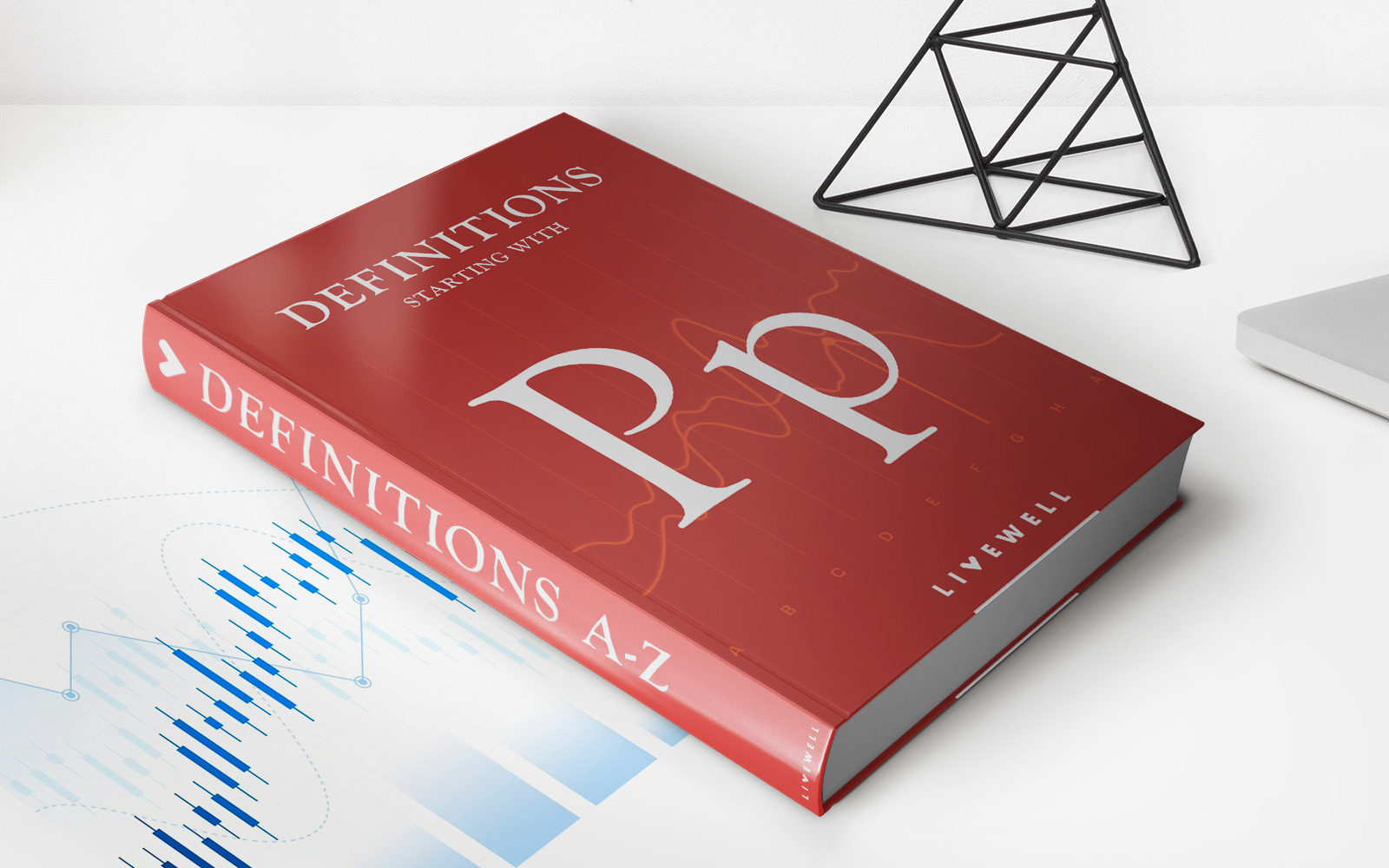Home>Finance>What Role Does Math Play In The Insurance Industry?


Finance
What Role Does Math Play In The Insurance Industry?
Published: November 15, 2023
Discover how math is an essential component of the insurance industry. Explore the intricate relationship between finance and mathematics to ensure robust risk assessment and accurate calculations.
(Many of the links in this article redirect to a specific reviewed product. Your purchase of these products through affiliate links helps to generate commission for LiveWell, at no extra cost. Learn more)
Table of Contents
Introduction
The insurance industry, with its complex and dynamic nature, relies heavily on mathematics to assess risks, predict outcomes, and make informed decisions. From actuarial science to financial management, mathematics plays a critical role in various aspects of this industry. In this article, we will explore the crucial role that math plays in the insurance industry and how it contributes to the accurate pricing of policies, effective risk assessment, claims analysis, fraud detection, and more. So buckle up and let’s dive into the fascinating world where numbers meet insurance!
Insurance is all about managing risk. Whether it’s insuring a home, a car, or a business, insurance companies need to evaluate the likelihood of an event occurring and the potential financial impact it may have. This is where actuarial science comes into play.
Actuarial Science and Risk Assessment
Actuarial science is the discipline that deals with the assessment of risk using mathematical and statistical techniques. Actuaries are trained professionals who apply these techniques to analyze data, model future scenarios, and determine the probability and magnitude of potential losses. Their expertise is relied upon by insurance companies to price policies accurately and ensure their financial stability.
Price is one of the key factors that influence the purchase decision for insurance policies. Insurance companies use advanced mathematical models to determine the appropriate premiums based on various factors such as age, gender, location, health condition, and past claims history. These models also take into account the probability of different events occurring and the potential cost of claims associated with them. By analyzing historical data and building complex risk models, actuaries can provide accurate price estimates that strike a balance between profitability for the insurance company and affordability for the policyholders.
But pricing insurance policies is just one aspect of the insurance industry where math plays a crucial role. Let’s take a deeper look at how mathematics influences other important functions within the industry, such as underwriting, claims analysis, fraud detection, and financial management.
Actuarial Science and Risk Assessment
In the insurance industry, understanding and assessing risk is paramount. Actuarial science, a branch of mathematics, provides the tools and techniques to evaluate and manage risk effectively. Actuaries, experts in this field, utilize mathematical models, statistical analysis, and probability theory to analyze data, make predictions, and quantify risk.
Actuaries play a pivotal role in insurance companies, helping them make informed decisions regarding pricing policies and managing financial solvency. By studying past data and trends, actuaries can assess the probability and severity of different risks. They evaluate factors such as demographics, health conditions, and historical claims data to determine the likelihood of certain events occurring and the potential financial impact.
Based on this analysis, actuaries calculate the premium rates that insurance companies charge policyholders. These rates not only cover the potential cost of claims but also account for the insurer’s administrative expenses and desired profit margins. Actuaries aim to strike a balance between affordability for policyholders and ensuring the insurer’s long-term financial viability.
Actuarial science also plays a crucial role in risk management. Actuaries help insurance companies understand and mitigate risks by developing risk models and recommending strategies for risk reduction. They assess the impact of different factors on risk, such as changes in regulations, economic conditions, or emerging trends.
Insurance companies rely on actuarial science to make decisions regarding new product development, expansion into new markets, and risk diversification. By utilizing sophisticated mathematical models, actuaries can predict the potential impact of these decisions and make data-driven recommendations to drive business growth and profitability.
Actuaries also perform regular evaluations of insurance company reserves, ensuring that they are sufficient to cover potential future claims. By projecting future liabilities and analyzing financial data, they help insurers maintain financial stability and meet regulatory requirements.
In summary, actuarial science is at the core of risk assessment and management in the insurance industry. By utilizing mathematical models, statistical analysis, and probability theory, actuaries provide valuable insights into pricing policies, managing risk, and maintaining the financial health of insurance companies. Their expertise is vital in navigating the complex landscape of insurance and ensuring the industry’s long-term sustainability.
Pricing and Underwriting
Pricing and underwriting are critical functions within the insurance industry that heavily rely on mathematical principles. Insurance companies must accurately price their policies to balance the risk exposure and ensure profitability. This is where mathematics plays a crucial role.
When determining the price of an insurance policy, various factors need to be considered. Mathematics helps insurance companies analyze historical data, demographics, and other relevant variables to model the probability of different events occurring and estimate the potential cost of claims. Actuaries use mathematical models to quantify the risk associated with insuring different individuals or properties, taking into account factors such as age, location, health conditions, and past claims history.
Underwriting is the process of evaluating and assessing the risk of potential policyholders. Insurance companies use mathematical models and statistical analysis to assess the risk level of each applicant based on factors such as credit history, profession, and lifestyle choices. By applying mathematical algorithms and statistical techniques, underwriters can determine whether to accept an applicant, what policy terms to offer, and at what premium rate.
Mathematics also plays a vital role in predicting and managing claims. Insurance companies employ predictive modeling techniques to assess the likelihood of claims, estimate claim amounts, and identify fraud. By analyzing trends and historical data, insurers can build mathematical models that help them judge the potential risk associated with each insured individual or property.
Furthermore, mathematics assists insurance companies in determining the appropriate deductibles and coverage limits for policies. By evaluating past claims data and employing statistical analysis, insurers can set deductibles and coverage limits that are economically sound for both the policyholder and the company.
Mathematical principles also come into play when assessing the financial stability and profitability of insurance policies. Insurance companies calculate loss ratios, which compare the amount of premiums collected to the claims paid out. By using mathematical formulas, insurers can evaluate the risk exposure of their portfolios and adjust premiums or policy terms accordingly.
In summary, pricing and underwriting in the insurance industry heavily rely on mathematical models, statistical analysis, and predictive modeling techniques. By applying these principles, insurance companies can accurately assess risk, determine appropriate premium rates and policy terms, and ensure profitability while providing comprehensive coverage to policyholders.
Claims Analysis and Fraud Detection
One of the key functions in the insurance industry is claims analysis and fraud detection. Insurance companies rely on mathematical techniques and data analysis to assess the validity of claims and detect potential fraudulent activities. By analyzing patterns and trends in claims data, insurers can identify suspicious claims and protect themselves from fraudulent activities.
Mathematics plays a crucial role in claims analysis. Insurance companies use statistical analysis to evaluate claims data and determine the frequency and severity of different types of claims. By analyzing past data, insurers can identify patterns and trends that help them predict future claims and allocate resources accordingly. Mathematical models are also used to estimate the expected costs of claims, which helps insurers in budgeting and setting appropriate reserves.
Furthermore, insurance companies employ predictive modeling techniques to identify potentially fraudulent claims. By analyzing various data points, such as previous claims history, policyholder behavior, and external data sources, insurers can build mathematical models that identify suspicious patterns. These models help insurers flag claims that deviate from expected patterns or exhibit characteristics commonly associated with fraud.
Mathematics also plays a role in assessing the financial impact of fraudulent activities. Insurers employ mathematical algorithms to quantify the potential costs of fraud and determine the appropriate measures to mitigate the risk. By evaluating the financial impact of fraud, insurance companies can develop strategies to prevent fraudulent activities and safeguard their profitability.
Insurance companies also utilize data analysis techniques, such as machine learning algorithms, to automate the process of claims analysis and fraud detection. By feeding historical data into these algorithms, insurers can train them to identify patterns and make predictions. This enables faster and more accurate identification of fraudulent claims, allowing insurers to take immediate action.
Moreover, mathematics aids in building databases and systems that store and analyze claims data. Insurance companies utilize mathematical principles to design efficient and secure data infrastructure, ensuring that claims data is accurately recorded and readily accessible for analysis. This facilitates the timely review of claims and enables insurers to identify fraudulent activities promptly.
In summary, claims analysis and fraud detection in the insurance industry heavily rely on mathematical techniques and data analysis. By utilizing statistical analysis, predictive modeling, and data mining, insurance companies can evaluate the validity of claims, detect potential fraud, and protect themselves from financial losses. Mathematics plays a critical role in identifying patterns, quantifying risk, and ensuring the integrity of claims processing.
Predictive Modeling and Data Analysis
In the modern era of technology and big data, predictive modeling and data analysis have become indispensable tools in the insurance industry. Insurance companies utilize these techniques to make informed decisions, forecast future outcomes, and effectively manage risks. By leveraging mathematical models and analyzing extensive data sets, insurers can gain valuable insights that drive business strategies and improve overall performance.
Predictive modeling involves the use of statistical algorithms and machine learning techniques to analyze historical data and make predictions about future events. Insurance companies utilize predictive modeling to assess risks, estimate claim frequency and severity, forecast customer behavior, and determine pricing strategies. By analyzing vast amounts of data, insurers can identify patterns and trends that lead to more accurate predictions.
Data analysis is a fundamental component of predictive modeling. Insurance companies collect diverse data points, such as policyholder information, claims records, demographic data, and external variables like economic indicators and weather patterns. By analyzing this data, insurers gain insights into customer behavior, identify potential risks, and develop targeted strategies. Mathematical tools aid in the extraction, cleaning, and interpretation of data, enabling insurers to make data-driven decisions.
Predictive modeling and data analysis also play a significant role in improving customer experience and retention. By analyzing customer data, insurers can develop personalized products, pricing plans, and marketing strategies. Moreover, data analysis helps insurance companies identify potential risks and proactively offer risk mitigation services to their customers. By utilizing predictive modeling techniques, insurers can also identify customers at risk of cancellation and intervene with targeted retention efforts.
Mathematical models assist insurers in identifying potential fraud through data analysis. By analyzing various data points, such as policyholder information, claims data, and external databases, insurers can develop algorithms that flag suspicious behaviors and alerts investigators. Predictive modeling helps in detecting anomalies and patterns associated with fraudulent activities, leading to more effective fraud prevention and reduction.
Furthermore, the use of predictive modeling and data analysis enables insurers to enhance their underwriting processes. By analyzing vast amounts of data, insurers can identify factors that correlate with higher risks and adjust their underwriting guidelines accordingly. This allows insurers to evaluate risks more accurately, set appropriate premium rates, and provide tailored coverage to their customers.
In summary, predictive modeling and data analysis have become essential tools for insurance companies. By leveraging mathematical models and analyzing extensive data sets, insurers can make better-informed decisions, forecast future outcomes, mitigate risks, and improve customer experience. Through the application of these techniques, insurers can enhance underwriting processes, detect potential fraud, and develop personalized offerings for their customers.
Financial Management and Investment Analysis
Financial management and investment analysis are vital components of the insurance industry. Insurance companies must effectively manage their financial resources to ensure long-term profitability and stability. Mathematics and quantitative techniques play a critical role in guiding financial decision-making, asset allocation, and risk management strategies.
Insurance companies employ mathematical models and statistical analysis to assess investment opportunities and make informed decisions. By analyzing market trends, economic indicators, and historical data, insurers can identify investment options that align with their risk appetite and financial goals. Mathematical models help insurers evaluate the potential returns and risks associated with different investment portfolios, guiding them in selecting appropriate assets to maximize returns and minimize risks.
Asset-liability management is another area where mathematics plays a crucial role. Insurance companies need to match their assets with their liabilities to ensure they have sufficient funds available to meet future obligations. Mathematical models help insurers evaluate the cash flows from policies, estimate the future liabilities, and develop strategies to align their assets with these obligations. By utilizing mathematical techniques, insurers can manage their investment portfolios in a way that balances the need for income generation and liquidity.
Risk management is a fundamental aspect of financial management in the insurance industry. Insurance companies need to quantify and manage various types of risks, including market risk, credit risk, and operational risk. Mathematical models, such as Value-at-Risk (VaR) models and stress testing techniques, allow insurers to evaluate and measure the potential impact of these risks on their financial position. This helps insurers develop strategies to mitigate risks and protect their solvency.
Furthermore, mathematical tools aid insurance companies in determining appropriate reserve levels. Reserves are set aside by insurers to cover potential future claims. By utilizing statistical analysis and actuarial techniques, insurers can estimate the potential liabilities arising from existing policies and ensure that they maintain sufficient reserves to cover these obligations. This enables insurers to meet their contractual obligations and maintain financial stability.
Mathematics also comes into play when evaluating the financial performance of insurance companies. Insurers calculate key financial metrics, such as return on investment (ROI), loss ratio, and combined ratio, to assess their profitability and efficiency. By using mathematical formulas and analyzing financial data, insurers can evaluate their financial health, identify areas for improvement, and make informed decisions to optimize their performance.
In summary, financial management and investment analysis are essential functions in the insurance industry, and mathematics plays a central role in guiding decision-making, managing risks, and ensuring financial stability. By utilizing mathematical models, statistical analysis, and actuarial techniques, insurers can make informed investment decisions, manage their assets and liabilities, and maintain long-term profitability.
Conclusion
Mathematics is the backbone of the insurance industry, playing a critical role in every aspect of its operations. From actuarial science and risk assessment to pricing, underwriting, claims analysis, fraud detection, financial management, and investment analysis, mathematics provides the foundation for accurate decision-making and risk management.
Actuarial science, with its mathematical models and statistical techniques, enables insurance companies to assess risk, determine appropriate premium rates, and maintain financial stability. By analyzing data and predicting outcomes, actuaries provide valuable insights that drive pricing strategies and underwriting decisions.
Pricing and underwriting, influenced by mathematical models and algorithms, allow insurance companies to balance risk exposure, set appropriate premiums, and offer tailored coverage to policyholders. Data analysis and predictive modeling contribute to claims analysis and fraud detection, as insurers utilize mathematical algorithms to identify suspicious patterns and mitigate potential fraudulent activities.
Financial management in the insurance industry heavily relies on mathematics to analyze investment opportunities, manage assets and liabilities, and ensure long-term profitability. Mathematics helps insurers evaluate financial performance, assess risk exposures, and make informed decisions regarding asset allocation and risk management.
In conclusion, mathematics is an essential tool that drives the insurance industry’s accurate pricing, risk assessment, claims analysis, fraud detection, financial management, and investment analysis. Through mathematical models, statistical analysis, and predictive algorithms, insurance companies are able to make informed decisions, manage risks effectively, and provide comprehensive coverage to policyholders while maintaining their financial stability. As the insurance industry continues to evolve, mathematics will remain the foundation on which insurers rely to navigate complex scenarios and make data-driven decisions for the benefit of all stakeholders in the insurance ecosystem.














